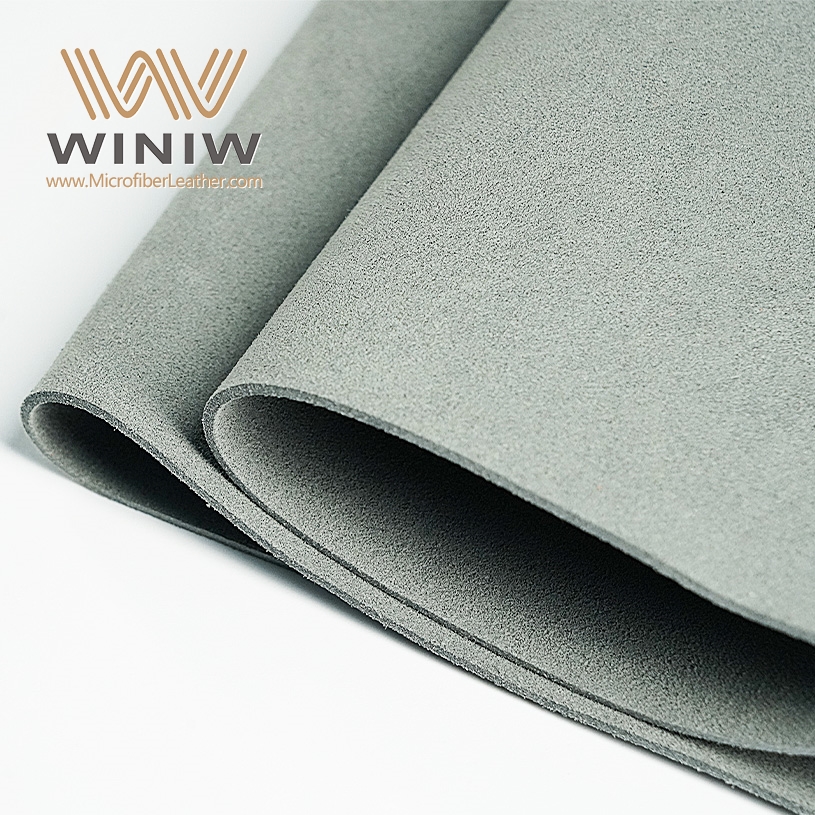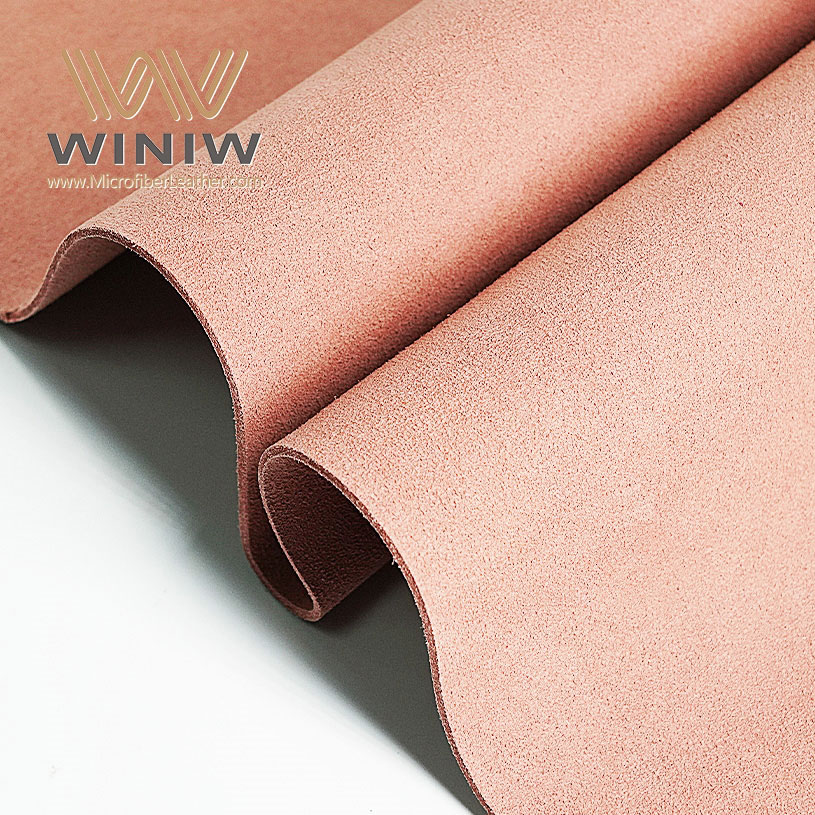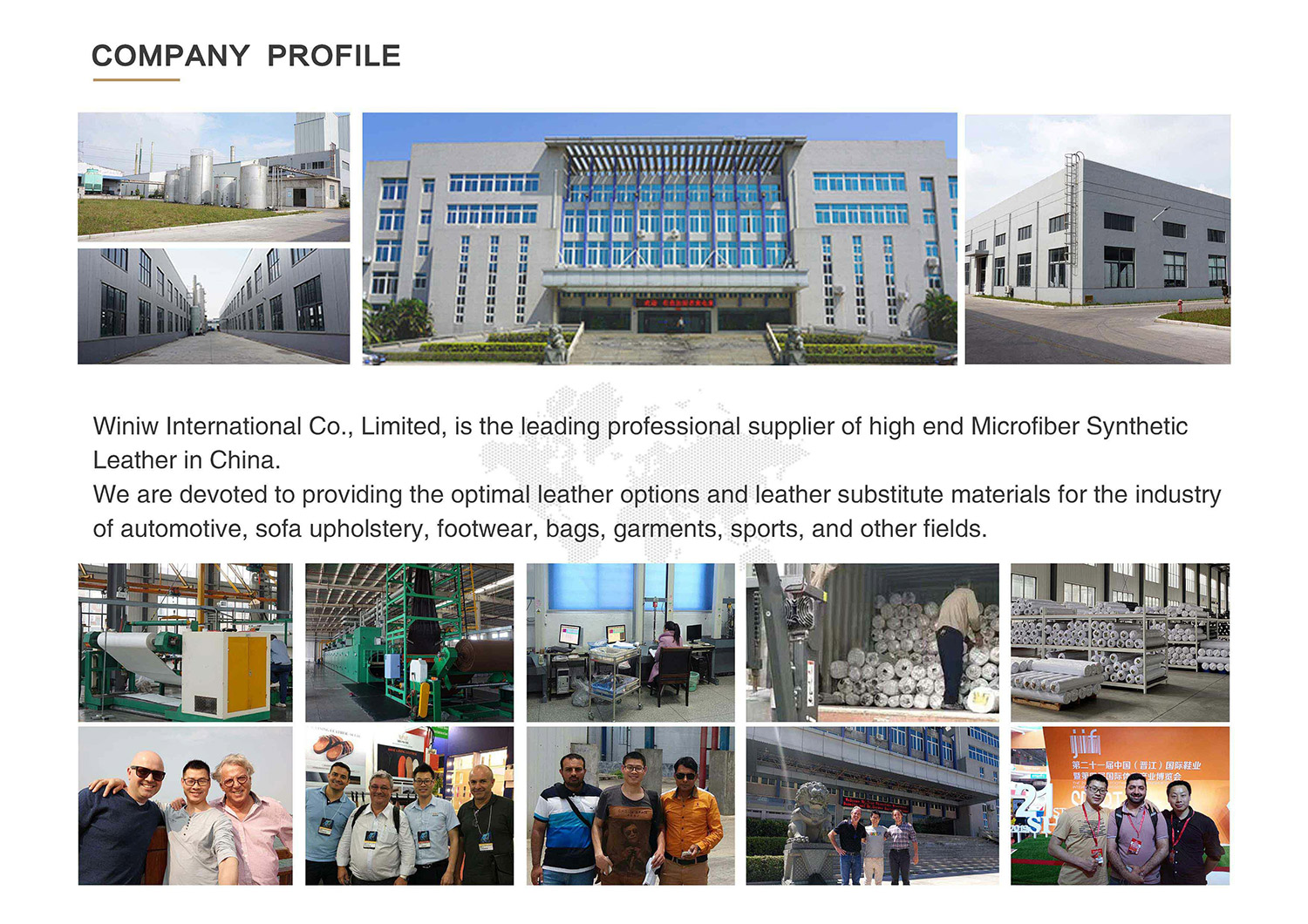
Você quer móveis duráveis, bonitos e resistentes a manchas. O tecido de couro sintético marrom atende a essas necessidades com durabilidade impressionante, fácil manutenção e um visual sofisticado. É importante verificar a resistência à abrasão para garantir a durabilidade, a espessura para o conforto e a impermeabilidade para a proteção. Muitos escolhem esse material por ser acessível, versátil, fácil de limpar e ecológico.
Econômico para a maioria dos projetos
Oferece uma variedade de texturas e cores.
Imita couro genuíno para um acabamento sofisticado.
Apoia os objetivos de sustentabilidade
Escolher tecido de couro sintético marrom Com uma resistência à abrasão de pelo menos 15.000 ciclos para maior durabilidade em uso residencial. Resistências maiores são mais adequadas para casas com crianças e animais de estimação.
Selecione a espessura adequada com base no uso. Espessuras médias a grossas são ideais para móveis de uso diário, enquanto opções mais leves são adequadas para peças decorativas.
Procure por características impermeáveis e resistentes a manchas para proteger seus estofados contra derramamentos e umidade. Tratamentos como o Ultraleather aprimoram essas qualidades.
Solicite amostras de tecido antes de comprar. Isso ajuda você a avaliar a textura, a cor e a durabilidade no seu espaço.
Ao escolher couro sintético, leve em consideração as certificações ecológicas. Isso contribui para a sustentabilidade e reduz o seu impacto ambiental.
Você quer que seu estofado resista ao desgaste diário. A durabilidade depende muito da resistência à abrasão do tecido, que mede quantas vezes um material pode ser esfregado antes de apresentar sinais de desgaste. Para uso residencial, procure por uma resistência à abrasão de pelo menos 15.000 ciclos duplos. A maioria dos estofados é resistente à abrasão. lar As aplicações variam entre 10.000 e 25.000 fricções duplas, enquanto os espaços comerciais geralmente exigem mais de 30.000 para áreas de alto tráfego.
|
Classificação de atrito duplo |
Descrição do aplicativo |
|---|---|
|
Mínimo 15.000 |
Ideal para uso em escritórios de porte médio, adequado para salas de conferência e áreas de espera. |
|
Serviço Pesado (15.000-30.000) |
Ideal para escritórios com fluxo moderado de pessoas, como quartos de hotel e áreas de refeições. |
|
Extra Resistente (mais de 30.000) |
Projetado para áreas de grande circulação, como salas de espera, teatros e restaurantes. |
Dica: Escolha uma resistência à abrasão maior se você prevê uso frequente ou se tem crianças e animais de estimação em casa. Isso garante que seu tecido de couro sintético marrom mantenha sua aparência e desempenho ao longo do tempo.
A espessura do tecido influencia tanto o conforto quanto a durabilidade. Para ambientes residenciais, escolha uma espessura que atenda às suas necessidades de uso. Peças decorativas podem usar materiais mais leves, enquanto móveis de uso diário se beneficiam de espessuras médias a grossas.
|
Caso de uso |
Classificação de atrito duplo |
Recomendação de espessura |
|---|---|---|
|
Uso residencial leve |
Menos de 5.000 |
Apenas para uso decorativo |
|
Uso residencial médio |
5.000 - 14.900 |
Adequado para salas de estar |
|
Uso residencial intenso |
15.000 - 29.900 |
Uso diário |
|
Uso comercial extremo |
30.000 ou mais |
Adequado para aplicações de serviço pesado. |
A textura também desempenha um papel significativo tanto no conforto quanto no estilo. Você pode encontrar tecido sintético marrom que imita a aparência e o toque do couro verdadeiro, oferecendo uma aparência elegante com baixa manutenção. No entanto, lembre-se de que o tecido sintético é menos respirável do que o couro genuíno e pode rachar ou descascar com o tempo.
Alternativa acessível ao couro genuíno.
Resistente à água e a manchas.
Visual elegante com manutenção mínima.
Menos respirável que o couro natural.

Você precisa de um tecido resistente a derramamentos e umidade, especialmente em residências movimentadas ou ambientes comerciais. Muitos tecidos de couro sintético marrom vêm com revestimentos avançados que aumentam a resistência à água e a manchas. Tratamentos populares como Ultraleather e Weathershield oferecem proteção confiável contra água, manchas, mofo e até raios UV.
|
Recurso |
Ultracouro |
Proteção contra intempéries |
|---|---|---|
|
Resistência à água |
Sim |
Sim |
|
Resistência a manchas |
Sim |
Sim |
|
Resistência ao mofo |
Sim |
Sim |
|
Resistência aos raios UV |
Sim |
Sim |
|
Método de limpeza |
Água e sabão ou água sanitária |
Fácil manutenção |
|
Peso |
Mais pesado que o vinil. |
25% mais leve que o vinil |
Observação: Sempre verifique as instruções de limpeza do fabricante. A maioria dos tecidos de couro sintético de alta qualidade são fáceis de limpar com água e sabão, sendo ideais para famílias e donos de animais de estimação.
Tecido de couro sintético marrom Oferece uma solução com melhor custo-benefício em comparação ao couro genuíno. Você pode esperar pagar entre US$ 8,95 e US$ 35,95 por jarda, enquanto o couro genuíno geralmente custa de US$ 50 a mais de US$ 200 por jarda. Essa diferença de preço permite que você conclua grandes projetos sem ultrapassar o orçamento.
|
Material |
Faixa de preço por jarda |
|---|---|
|
Couro sintético marrom |
$ 8,95 - $ 35,95 |
|
Couro genuíno |
De US$ 50 a mais de US$ 200 |
Você também tem acesso a uma ampla variedade de tonalidades. Os principais fornecedores oferecem opções como nogueira, tabaco, castanho e taupe, e muitas linhas apresentam ainda mais opções de cores. Essa variedade garante que você possa combinar seu estofado com qualquer estilo de decoração.
RU820 Naugahyde ROGUE II WALNUT Couro Sintético
6183615 PHILLIPS TABACO Couro Sintético
FLYBOY CHESTNUT Couro Sintético
Tecido vinílico DUNHAVEN TAUPE EZY5810
Opções adicionais com a indicação “Mais cores disponíveis”
Dica profissional: Solicite amostras em várias tonalidades para ver como cada uma fica no seu espaço antes de tomar uma decisão final.

Ao selecionar estofamento em couro sintético Geralmente, você precisa escolher entre couro sintético de PU (poliuretano) e PVC (policloreto de vinila). Cada tipo oferece vantagens distintas para diferentes aplicações. couro PU Ao toque, é mais macio e flexível, assemelhando-se bastante ao couro genuíno. couro PVC Destaca-se pela sua durabilidade e resistência à umidade, tornando-o ideal para móveis em ambientes de grande circulação.
|
Recurso |
Couro PU |
Couro PVC |
|---|---|---|
|
Maciez e Flexibilidade |
Mais macio, mais flexível, semelhante ao couro genuíno. |
Menos macio, menos flexível |
|
Resistência a manchas |
Mais poroso, suscetível a manchas. |
Resistente a manchas e rugas |
|
Permeabilidade ao ar |
Maior respirabilidade, permite a passagem da umidade. |
Menos respirável |
|
Durabilidade |
Propenso ao desgaste |
Mais durável, adequado para condições adversas. |
|
Resistência à água |
Menos eficaz na repelência da umidade. |
Excelente resistência à água |
|
Manutenção |
Requer mais cuidado. |
Mais fácil de limpar |
|
Custo |
Mais caro |
Mais econômico |
O couro PU é ideal para moda e vestuário, enquanto o couro PVC é preferido para móveis e áreas de grande circulação.
É preciso avaliar as vantagens e desvantagens de cada material antes de escolher o revestimento em couro sintético para o seu projeto.
Couro PU
Confortável e visualmente atraente
Respirável, o que aumenta o conforto.
Custo mais elevado e menor durabilidade ao longo do tempo.
Couro PVC
Acessível e duradouro
Fácil de limpar e manter.
Menos respirável e pode não parecer tão realista.
O couro PU tende a rachar e rasgar com o uso intenso, tornando-o menos adequado para móveis de uso frequente. O couro PVC, por sua vez, resiste a deformações e rachaduras, sendo uma opção prática para a maioria das necessidades de estofamento.

Você quer que seu tecido sintético marrom imite a aparência e a textura do couro verdadeiro. Os fabricantes utilizam diversas técnicas para alcançar esse efeito:
|
Técnica |
Descrição |
|---|---|
|
Relevo |
Cria texturas naturais semelhantes aos poros e rugas do couro. |
|
Tingimento |
Adiciona tons ricos e naturais, além de variações sutis de cor. |
|
Estilo antigo |
Aplica tratamentos para rachaduras escuras e aparência envelhecida. |
|
Acabamento fosco ou acetinado |
Utiliza selantes foscos para evitar brilho artificial. |
|
Costura |
Utiliza costura de alta qualidade para reproduzir detalhes em couro genuíno. |
|
Pátina |
Simula o envelhecimento com cera ou óleo para um brilho sutil. |
|
Incorporar falhas |
Adiciona imperfeições para um visual mais natural. |
Solicite amostras antes de comprar. Toque e inspecione a superfície para garantir que o revestimento em couro sintético corresponda às suas expectativas de autenticidade.

Você quer que seu estofado de couro sintético marrom permaneça fácil de limpar e com a melhor aparência por muitos anos. Os fabricantes recomendam uma rotina simples de limpeza.
Use um pano de microfibra macio e seco ou um acessório de aspirador de pó semanalmente para remover a poeira.
Limpe imediatamente qualquer derrame ou mancha para evitar danos permanentes.
Limpeza profunda e condicionamento a cada seis a doze meses.
Evite produtos químicos agressivos, dois em um produtos , excesso de água e produtos de limpeza não adequados para couro.
Para limpeza de rotina, use um pano de microfibra úmido com uma mistura de sabão neutro e água destilada.
A ação rápida sobre as manchas facilita a limpeza dos seus móveis e ajuda a evitar marcas permanentes.
A manutenção regular prolonga a vida útil do seu estofado e facilita a limpeza.
Limpe seu sofá profundamente uma ou duas vezes por ano.
Limpe os artigos de couro sintético de cor clara a cada seis meses e os de cor escura uma vez por ano.
Aspire e limpe o pó a cada uma ou duas semanas.
Use creme para couro para minimizar arranhões e consulte profissionais para reparos mais profundos.
Aumente o condicionamento físico durante o inverno para combater o ressecamento.
Proteja da exposição solar no verão e mantenha a umidade interna.
Para uma conservação ideal, agende uma limpeza profissional a cada 12 a 18 meses.
Evite erros comuns:
Utilizar produtos de limpeza inadequados.
O excesso de condicionamento atrai sujeira.
Ignorar os danos causados pela luz solar e pelo calor.
Não tratar as manchas rapidamente.
Negligenciar o armazenamento adequado.
Você pode querer escolher estofados fáceis de limpar que apoia a sustentabilidade. Procure tecidos com certificações ecológicas.
|
Nome da Certificação |
Descrição |
|---|---|
|
MBDC Do berço ao berço |
Avalia a sustentabilidade ao longo de todo o ciclo de vida do produto. |
|
Padrão Oeko-Tex 100 |
Garante que os tecidos estejam livres de substâncias nocivas e sejam seguros para uso humano. |
|
NSF/ANSI 336 |
Avalia a sustentabilidade de produtos têxteis por meio de certificação independente de terceiros. |
Solicite amostras antes de comprar. Teste a facilidade de limpeza, limpando derramamentos e verificando se há resíduos ou manchas. Verifique as certificações com o fornecedor para garantir que você está adquirindo opções genuinamente ecológicas.

É sempre recomendável solicitar amostras antes de tomar uma decisão final. Toque e inspecione cada peça para avaliar a qualidade. Examine a superfície quanto à textura, flexibilidade e consistência da cor. Esfregue a amostra para testar a durabilidade e verificar se há sinais de descascamento ou rachaduras. Você também pode derramar uma pequena quantidade de água para ver a rapidez com que o tecido repele a umidade. Essa abordagem prática ajuda você a identificar o tecido certo para o seu projeto.
Dica: Coloque as amostras no seu espaço real. Observe como a iluminação afeta a tonalidade e o acabamento. Esta etapa garante que você selecione o tecido certo que combine com a sua decoração.
A escolha do tecido certo depende do seu projeto específico de estofamento. É preciso considerar o desempenho do tecido no ambiente em que será usado. Por exemplo, interiores de automóveis exigem couro sintético que resista ao uso frequente e à exposição à luz solar. Móveis como sofás e cadeiras se beneficiam de opções fáceis de limpar e resistentes a manchas. Já o tecido ideal para pufes ou poltronas decorativas pode priorizar a textura e o estilo.
Aqui está uma tabela para ajudá-lo(a) a escolher o tecido certo para suas necessidades:
|
Critérios |
Descrição |
|---|---|
|
Durabilidade |
Selecione móveis com alta resistência à abrasão dupla para uso intenso. |
|
Resistência a manchas |
Escolha tecidos com resistência a manchas para casas com crianças ou animais de estimação. |
|
Conforto e textura |
Avalie o apelo tátil; as fibras sintéticas oferecem durabilidade, os tecidos naturais proporcionam luxo. |
|
Manutenção |
Consulte as etiquetas de cuidados para obter informações específicas sobre os requisitos de manutenção. |
|
Considerações ambientais |
Opte por opções ecológicas feitas com materiais reciclados. |
|
Solidez da cor |
Procure etiquetas resistentes ao desbotamento ou aos raios UV para evitar a perda de cor. |
Você descobrirá que tecido de couro sintético marrom Funciona bem tanto para projetos automotivos quanto para projetos de mobiliário. Oferece uma solução elegante, durável e com ótimo custo-benefício. Sempre escolha o tecido certo de acordo com as necessidades do seu espaço.
Antes de comprar, use esta lista de verificação para confirmar se escolheu o tecido certo:
Você testou amostras para verificar a qualidade e a durabilidade?
O tecido escolhido atende às necessidades de resistência a manchas e manutenção do seu projeto?
Você já verificou se o produto possui certificações ecológicas?
O tecido escolhido oferece o conforto e a textura que você deseja?
A resistência da cor é adequada para o seu ambiente?
O tecido escolhido se encaixa no seu orçamento e estilo?
Lembre-se: o tecido certo garante que seu projeto de estofamento ofereça desempenho duradouro e apelo visual.
Ao escolher um tecido de couro sintético marrom, você prioriza durabilidade, estilo e conforto. Deseja um material resistente ao desgaste diário, que combine com sua visão de design e seja convidativo ao toque. A facilidade de limpeza e manutenção contribui para a satisfação a longo prazo. A sustentabilidade é importante tanto para sua casa quanto para o meio ambiente. Escolha opções certificadas para promover a sustentabilidade e reduzir seu impacto ecológico. Teste amostras antes de comprar. Considere a sustentabilidade como um princípio orientador para todos os seus projetos de estofamento.

Você seleciona couro sintético marrom Porque não contém produtos de origem animal. Esta opção vegana utiliza materiais sintéticos, sendo adequada para quem evita produtos de origem animal. Os fabricantes projetam produtos de alta qualidade. couro vegano Para imitar a aparência e a textura do couro genuíno.
Você pode testar a resistência a manchas aplicando uma pequena quantidade de líquido ou sujeira em uma amostra. Limpe a área com um pano limpo. O couro vegano de alta qualidade, resistente a manchas e sujeira, deve repelir a maioria dos derramamentos, tornando-se um material de baixa manutenção.
Você escolhe o couro sintético marrom para projetos ecologicamente conscientes porque muitas marcas oferecem certificações de sustentabilidade. Essas certificações comprovam métodos de produção responsáveis. As opções veganas geralmente utilizam materiais reciclados, apoiando metas ecológicas.
A limpeza do couro sintético marrom deve ser feita com água e sabão neutro. Evite produtos químicos agressivos. Este material de baixa manutenção resiste a manchas e sujeira, reduzindo o tempo gasto com a conservação. O couro vegano de alta qualidade mantém sua aparência com cuidados simples.
Você descobrirá que o couro sintético marrom oferece uma durabilidade impressionante. Os fabricantes desenvolvem couro vegano de alta qualidade para resistir ao uso diário. A resistência a manchas e sujeira ajuda a manter a superfície em bom estado. Muitas opções de couro sintético duram anos com os devidos cuidados.

Digitalizar para wechat:
